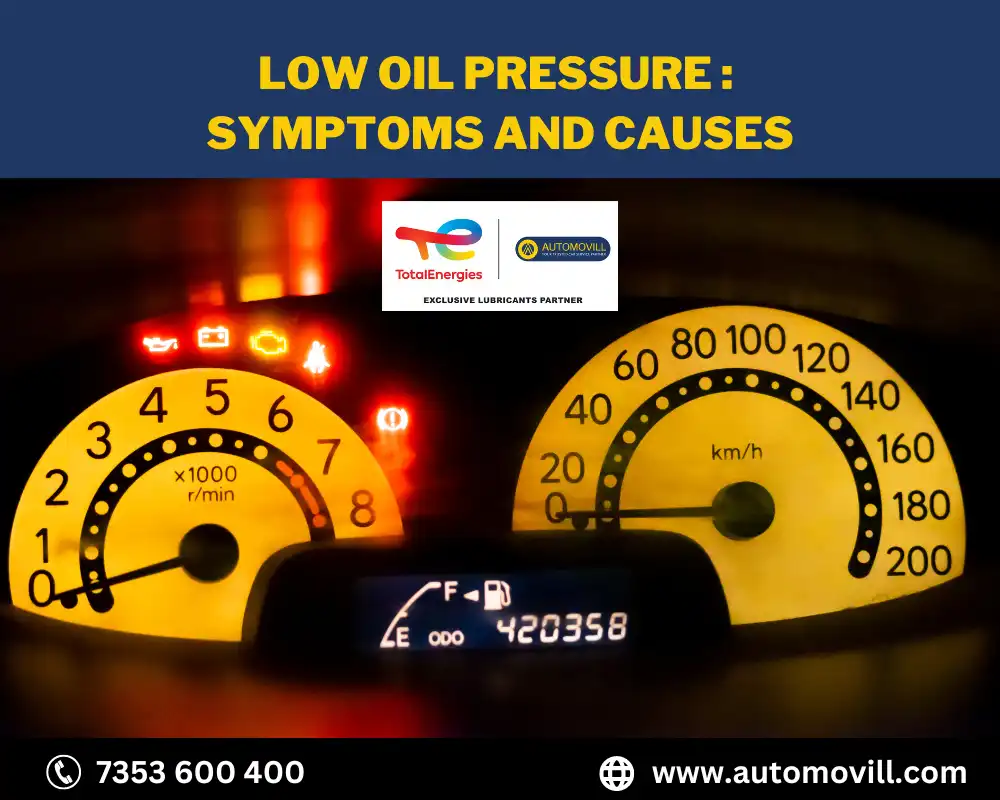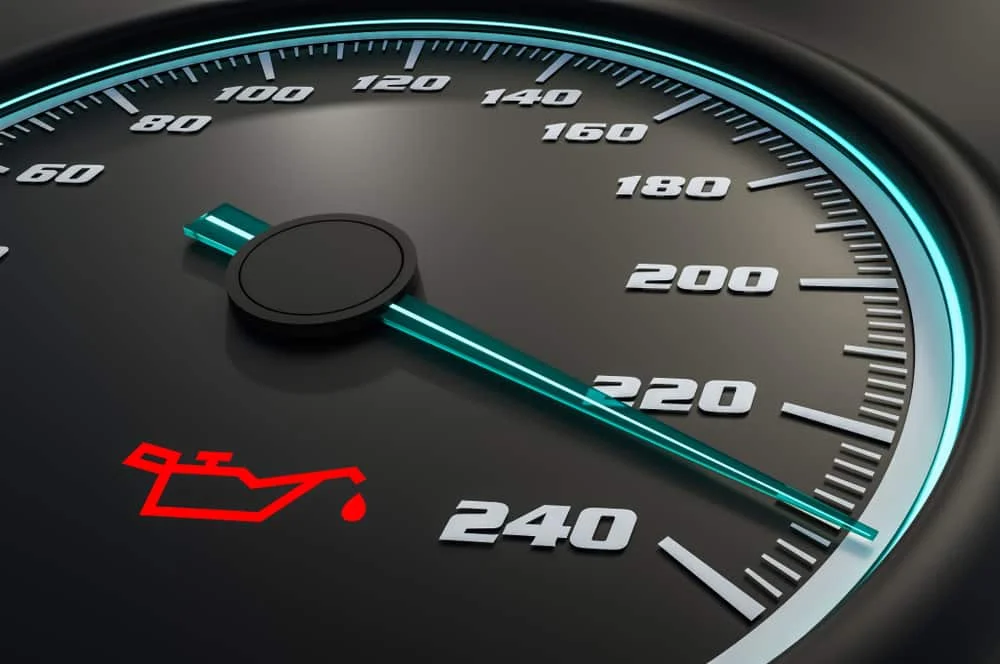
Is your car consuming too much fuel? Or having a problem accelerating the car?
It could be because of low oil pressure.
Keeping proper oil pressure is crucial for the smooth operation and longevity of an engine.
In this blog, we will discuss common symptoms associated with this issue and the various causes that can lead to low oil pressure.
Recognizing these symptoms and understanding their underlying causes can help prevent serious engine damage and ensure prompt action is taken to resolve the issue.
What is Low Oil Pressure?
Low oil pressure refers to a condition where the oil pressure in an engine falls below the manufacturer’s recommended levels.
Oil pressure is the force exerted by the engine oil as it circulates through the engine, providing lubrication and cooling to vital components.

Symptoms of Low Oil Pressure:
1) Dashboard Warning Lights
- The oil pressure warning light (typically shaped like an oil can) illuminates on the dashboard.
- Some vehicles may display a “Low Oil Pressure” warning message.
2) Engine Noise
- Ticking, tapping, or knocking sounds coming from the engine, especially during idle or acceleration.
- Rattling or rumbling noises that increase with engine speed.
3) Poor Performance
- Decreased power and acceleration.
- Engine misfires or rough engine idling.
- Reduced fuel efficiency.
4) Oil Leaks
- Visible oil leaks under the vehicle, especially around the engine area.
- Oil spots or puddles are left behind after parking.
5) Engine Overheating
- Elevated engine temperature due to inadequate lubrication and cooling.
- Engine temperature gauge showing higher-than-normal readings.
6) Fluctuating Oil Pressure Gauge
The oil pressure gauge on the dashboard fluctuates erratically or shows consistently low readings.
Causes of Low Oil Pressure
1) Low Engine Oil
Oil leaks, delayed oil changes, or excessive consumption lead to low engine oil levels and hence low oil pressure. So, you should keo change the engine oil at regular intervals or every 10000km run
2) Oil Pump Issues
- Worn-out or damaged oil pump: Over time, the internal components of the oil pump can wear down, reducing its efficiency in circulating oil.
- Clogged oil pump screen or pickup tube: Contaminants, sludge, or debris can accumulate in the oil pump screen or pickup tube, restricting oil flow and causing low oil pressure.
3) Engine Wear
- Worn-out engine bearings: Engine bearings provide smooth movement and support between moving parts. When they wear out, there can be excessive clearance, leading to a drop in oil pressure.
- Piston ring wear: If the piston rings become worn or damaged, they may allow oil to bypass into the combustion chamber, reducing the oil supply available for lubrication.
4) Oil Viscosity
Using oil with the wrong viscosity or low-quality oil that doesn’t meet the manufacturer’s specifications can result in higher viscosity, making it harder for the oil to flow through the engine and maintain proper pressure.
5) Clogged Oil Filter
A dirty or clogged oil filter can restrict oil flow to the engine, leading to decreased oil pressure and it might also damage other fuel system components
6) Temperature Extremes
Extreme temperature conditions can impact oil viscosity. Cold temperatures can cause oil to thicken, impeding its flow, while high temperatures can cause oil to thin excessively, reducing its ability to maintain proper pressure.
7) Faulty Oil Pressure Sensor:
A faulty sensor can provide incorrect readings, causing the oil pressure warning light to illuminate or displaying inaccurate oil pressure readings on the gauge.
What happens if I drive with low oil pressure?
Driving with low oil pressure will drop the oil pressure so much that can eventually cause severe damage to your vehicle’s engine. Insufficient lubrication leads to increased friction and heat, resulting in overheating and accelerated wear and tear.
Over time, this can cause irreversible damage to critical engine components, potentially leading to complete engine failure.
Conclusion:
Recognizing the symptoms associated with low oil pressure is essential to prevent severe engine damage and ensure the longevity of your vehicle. By understanding the causes behind this issue, you can take the necessary steps to address the problem promptly.
Regular maintenance, including routine oil changes and inspection of the oil pressure system, can help maintain optimal oil pressure levels and keep your engine running smoothly.
If you suspect low oil pressure, consult a skilled mechanic or contact Automovill. We are just just a phone call away.
